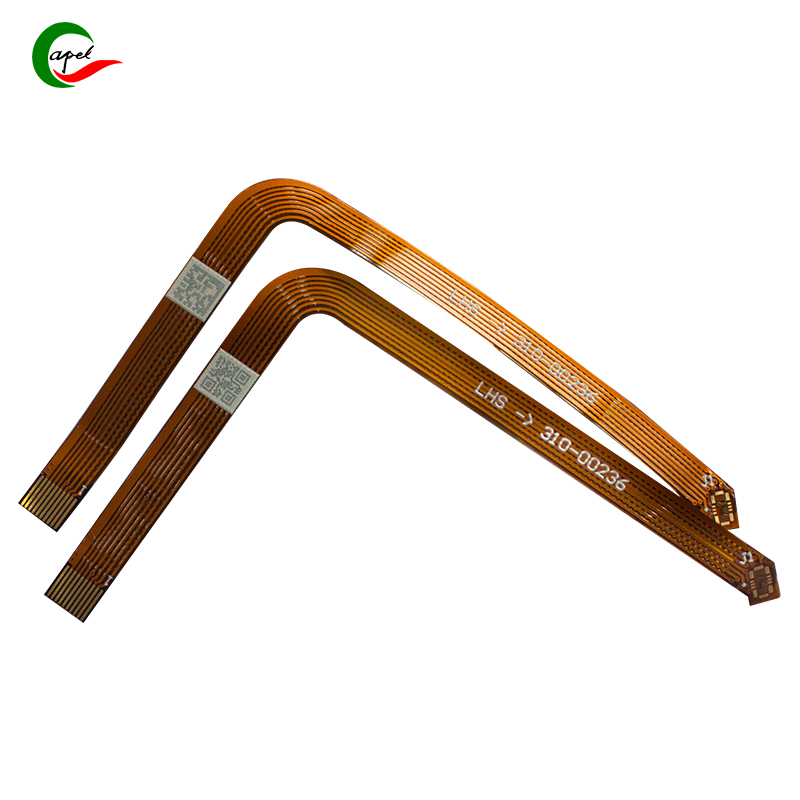Flexible PCBs are everywhere in devices that bend—from smartwatch bands to car door sensors. But if you’re using them in places that get hot (like near a car engine, inside a laptop, or in a kitchen appliance), you might wonder: Can they handle high temperatures? Will they melt, warp, or stop working if things get too warm? Let’s break this down with real numbers, examples, and no confusing jargon—just straight talk.
Before we answer if they can withstand heat, let’s define “high temperature” for this context. Flexible PCBs aren’t built for extreme heat (like a welding torch), but they can handle the everyday and moderate high temperatures most devices encounter. Here’s the baseline:
-
Safe range: 80°C–120°C (176°F–248°F). This covers most common hot spots—like a laptop’s internal components (90°C max), a car’s dashboard on a hot day (60°C–80°C), or a smartwatch on your wrist (37°C–45°C, even during exercise).
-
Dangerous range: Over 150°C (302°F). At this point, the flexible PCB’s core materials start to break down.
-
Extreme danger: Over 200°C (392°F). The PCB will melt, warp, or have its copper circuits peel off—rendering it useless.
A flexible PCB’s ability to handle heat depends entirely on two key materials: its substrate (the bendable base) and copper circuits. Here’s how each affects heat resistance:
Nearly all flexible PCBs use a substrate made of polyimide—a thin, bendable plastic. Polyimide is decent at handling heat, but it has limits:
-
Standard polyimide: Can handle 120°C–150°C (248°F–302°F) for short periods (a few hours). If exposed to 150°C for longer than 4–6 hours, it starts to turn brittle and lose flexibility.
-
Example: A flexible PCB with standard polyimide in a laptop’s hinge (which hits 90°C–100°C during heavy use) will work fine for years. But if you put it near a car engine (which hits 180°C–220°C), the polyimide will warp in days.
The thin copper lines on flexible PCBs also react to heat:

If you need a flexible PCB for a hotter environment (like a factory machine or a car’s engine bay), you can’t use a standard one—but you can upgrade it. Here are the three most common tweaks to boost heat resistance:
Instead of standard polyimide, use a “high-temperature polyimide” (often mixed with materials like glass fiber). This substrate can handle 180°C–200°C (356°F–392°F) for long periods—perfect for:
-
Car engine sensors: These sit near engines that hit 160°C–180°C. A high-temperature flexible PCB will last 5+ years here, vs. 6 months for a standard one.
-
Industrial ovens: Sensors inside ovens that reach 190°C use these PCBs to send temperature data without failing.
For parts of the PCB that get extra hot (like a power chip), attach a small heat sink (a metal block that absorbs heat) or a thermal pad (a soft, heat-conducting pad). This pulls heat away from the PCB:
-
Example: A flexible PCB in a high-power LED light (which gets 140°C near the LED) uses a tiny heat sink. The heat sink keeps the PCB at 110°C—well within its safe range.
The solder that attaches components to the PCB can melt in high heat. Standard solder melts at 183°C, but “high-temperature lead-free solder” melts at 217°C–227°C. This ensures components don’t fall off when the PCB gets hot:
-
Use case: Flexible PCBs in commercial coffee makers (which hit 150°C near the heating element) use this solder. Even when the coffee maker runs all day, the components stay attached.
There are some hot environments where even upgraded flexible PCBs fail. Here are the two main ones—and what to use instead:
If the environment hits 200°C+ (like near a welding machine, a rocket engine, or a metal-melting furnace), flexible PCBs will melt. Instead, use ceramic PCBs—they can handle 600°C+ but don’t bend.
Devices that are both hot and vibrating (like a jet engine’s fuel sensor, which hits 190°C and vibrates heavily) are too tough for flexible PCBs. The heat makes the polyimide brittle, and vibration cracks the copper circuits. Instead, use rigid high-temperature PCBs (made of FR-4 with heat-resistant coatings)—they’re sturdier against vibration.
Flexible PCBs can handle the high temperatures most everyday and moderate devices throw at them (80°C–120°C). With upgrades (high-temperature polyimide, heat sinks), they can even handle 180°C–200°C for industrial use. But they’re not built for extreme heat (over 200°C)—for that, you need other types of PCBs. The key is to match the flexible PCB’s heat resistance to your device’s environment: If it’s a smartwatch or laptop, a standard one works. If it’s near a car engine or factory oven, upgrade it.
related link:
